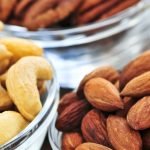“How young can you die of old age?”
~Stephen Wright
Comedian Stephen Wright was making a joke with that question, but now it seems an entire generation has decided to take it seriously. Health issues that used to be limited mostly to senior citizens are becoming increasingly common in younger populations. One scary example: strokes are on the rise among people under 45 years old.
A new study conducted at the Centers for Disease Control in Atlanta found that the rate of strokes in children and younger adults has risen tremendously in just over a decade.1 The researchers analyzed records from hospitals in 41 states across America and compared the ages of those hospitalized for ischemic stroke — the most commonly occurring type, usually caused by a clot choking off the flow of blood to the brain — between 1994 and 1995, and again between 2006 and 2007.
The change in numbers was startling in such a short period of time. Boys and men between the ages of 15 and 34 experienced an increase in their rate of hospitalization for strokes of 51 percent, the largest jump of any age group. The stroke rate for girls and women between the ages of 15 and 34 increased by 17 percent. And the next older age group fared no better. Men between the ages of 35 and 44 showed an increase of 47 percent, while the women between the ages of 35 and 44 increased by 36 percent.
Even young children, whose stroke rates per 10,000 hospitalizations are still at relatively low numbers, were found to have an alarming rise in strokes between the two time periods. Boys between the ages of 5 and 14 showed an increase of 31 percent and girls the same age increased by 36 percent.
And frighteningly, a 2009 study found pediatric strokes to be woefully underreported.2 This research at the University of California, San Francisco, determined that children have strokes two to four times more frequently than was previously thought. Hospitals haven’t always reported strokes among children in part because record-keeping systems lack the proper diagnostic codes, resulting in many cases of stroke being classified as something else.
The other issue behind this underreporting is that many physicians aren’t looking outside the box, literally or figuratively. Since childhood stroke was thought to be so rare — afflicting only about 2.4 out of every 100,000 children — doctors haven’t always seen stroke as the presenting condition for the simple reason that they never expected to see it in the first place. Focusing so intently on symptoms and diagnoses that they are familiar with, they can fail to consider other possibilities — an unpleasant thought for any of us who are faced with a hospital stay.
But there is a bright spot on the bleak stroke horizon in the current study. A segment of the population that actually showed decreases in their rate of strokes are the older generations. Strokes diminished by 12 percent in men and by 13 percent in women between the ages of 45 and 64. And among those 65 and older, the stroke rate declined by 25 percent in men and 28 percent in women.
It’s not yet exactly clear why those 45 and over — the very population at the greatest risk for stroke since age is a factor — are showing a decrease in strokes. One possible reason is that they are more aware of their risks and making positive changes to their diet and exercise routines to improve their health. Although unfortunately for many people, it takes a major health scare of some kind to initiate efforts at better nutrition or physical fitness. And of course, one major factor could be the reduction in smoking in the older generation, considering that smoking is a major factor in ischemic stroke. Unfortunately, if true this is bad news for the younger generation where smoking has been generally on the rise over the last ten years — particularly hookah tobacco. Young adults think hookah tobacco is safe because it’s flavored; they are so, so wrong. According to the World Health Organization, “the smoke from a typical hookah session equals smoke from roughly 100 cigarettes.”3
As for the higher numbers of stroke among younger people, that should come as no surprise to anyone who reads this website. The evidence points to the overall lack of health in both children and adults these days. Obesity, high blood pressure, and diabetes are rampant among the young and these are some of the top risk factors for stroke. That seems to be how we’ve managed to lower the age threshold for many ailments typical of the elderly — cardiovascular disease, stroke, diabetes, cancer, etc. — to include much younger individuals.
1 Kuklina, Elena V.; Gillespie, Cathleen; George, Mary G. “Ischemic stroke hospitalizations decline in middle aged, elderly, increases in young.” American Heart Association News Releases. 9 February 2011. American Heart Association, Inc. 28 April 2011. <http://www.newsroom.heart.org/index.php?s=43&item=1250>.
2 Agrawal, Nidhi; Johnston, S. Claiborne; Wu, Yvonne W.; Sidney, Stephen; Fullerton, Heather, J. “Imaging Data Reveal a Higher Pediatric Stroke Incidence Than Prior US Estimates.” Stroke. 17 September 2009. American Heart Association, Inc. 29 April 2011. <http://stroke.ahajournals.org/cgi/content/abstract/40/11/3415>.
3 Fox 12, Oregon. “Hookah Use Among Teenagers Rising.”9 November 2010. Accessed 29 April 2011. < http://www.kptv.com/health/25682734/detail.html>.










